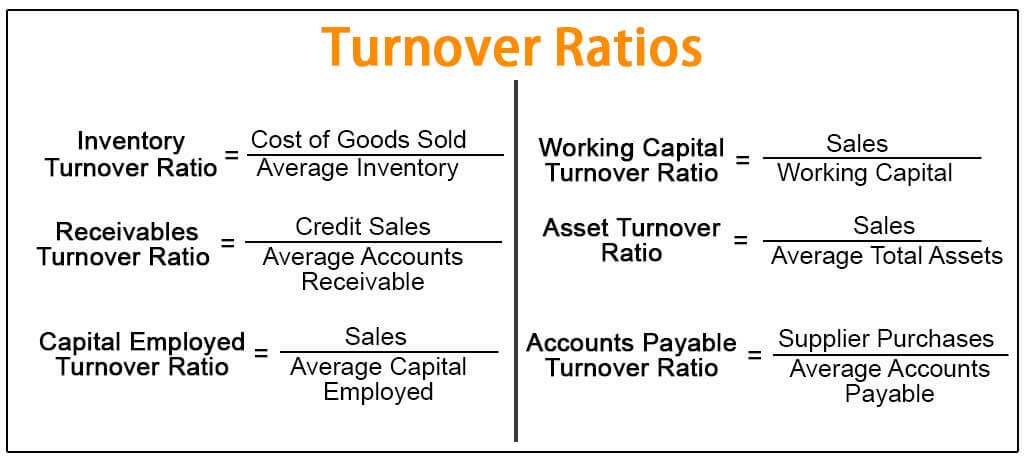
While both are turnover ratios, each reveals a different aspect of business operations. As discussed earlier, A/P turnover measures how quickly a company pays its suppliers. Meanwhile, A/R turnover pertains to how quickly a company collects from customers.
Example Calculation
This seasonality must be accounted for to avoid misinterpretation of the ratio at different times of the year. The reliability of the AP turnover ratio hinges on the accuracy of financial data. Inconsistent accounting practices, errors in recording transactions, or changes in accounting policies can lead to fluctuations in the ratio, making it a less reliable indicator. With this data at your fingertips, cross-departmental collaboration becomes more productive, allowing you to identify opportunities to improve efficiency and AP turnover to help the business grow. If your AP turnover target is lower than your ratio today, you’ll need to pay your bills more slowly.
- Accounts payable turnover ratio is a measure of your business’s liquidity, or ability to pay its debts.
- It proves whether a company can efficiently manage the lines of credit it extends to customers and how quickly it collects its debt.
- Your suppliers take note of your timely payments and extend your terms to Net 30 and Net 45.
- A low ratio may indicate issues with collection practices, credit terms, or customer financial health.
Accounts Payable (AR) Turnover Ratio Example
By calculating the AP turnover ratio regularly, you can gain insights into your payment management efficiency and make informed decisions to optimize your accounts payable process. A limitation of the ratio could be when a company has a high turnover ratio, which would be considered as a positive development by creditors and investors. If the ratio is so much higher than other companies within the same industry, it could indicate that the company is not investing in its future or using its cash properly.

Payables Turnover Ratio vs. Days Payable Outstanding (DPO)
In some instances, a lower ratio might be a deliberate strategy to leverage longer payment terms for better cash flow management. Here are a quick, easy answers to some of the most commonly asked questions about accounts payable turnover ratios. The first step in improving your AP turnover ratio is to start tracking it regularly.
The best way to determine if your accounts payable turnover ratio is where it should be is to compare it to similar businesses in your industry. Doing so provides a better measurement of how well your company is performing when it’s analyzed along with other companies. A lower accounts payable turnover ratio can indicate that a company is struggling to pay its short-term liabilities because of a lack of cash flow. This can indicate that a business may be in financial distress, making it more difficult to obtain favorable credit terms. After performing accounts payable turnover ratio analysis and viewing historical trend metrics, you’ll gain insights and optimize financial flexibility.
Do you want a high or low accounts payable turnover?
Calculate the accounts payable turnover ratio formula by taking the total net credit purchases during a specific period and dividing that by the average accounts payable for that period. The average accounts payable is found by adding the beginning and ending accounts payable balances for that period of time and dividing it by two. You can automatically or manually compute the sample balance sheet and income statement for small business ratio for the time period being measured and compare historical trends. The accounts payable turnover ratio measures the rate at which a company pays back its suppliers or creditors who have extended a trade line of credit, giving them invoice payment terms. To calculate the AP turnover ratio, accountants look at the number of times a company pays its AP balances over the measured period.
A high turnover ratio can be used to negotiate favorable credit terms in the future. Like all key performance indicators, you must ensure you are comparing apples to apples before deciding whether your accounts payable turnover ratio is good or indicates trouble. If you decide to compare your accounts payable turnover ratio to that of other businesses, make sure those businesses are in your industry and are using the same standards of calculation you are. As with all financial ratios, it’s useful to compare a company’s AP turnover ratio with companies in the same industry. That can help investors determine how capable one company is at paying its bills compared to others. The accounts payable turnover ratio can reveal how efficient a company is at paying what it owes in the course of a year.
The accounts payable turnover ratio is used to quantify the rate at which a company pays off its suppliers. Accounts payable turnover is a ratio that measures the speed with which a company pays its suppliers. If the turnover ratio declines from one period to the next, this indicates that the company is paying its suppliers more slowly, and may be an indicator of worsening financial condition. A change in the turnover ratio can also indicate altered payment terms with suppliers, though this rarely has more than a slight impact on the ratio.
That means the company has paid its average AP balance 2.29 times during the period of time measured. That all depends on the amount of time measured, along with current AP turnover ratio benchmarks and trends over time in the SaaS industry. Accounts payable turnover ratio is just another way of saying accounts payable turnover. You can calculate your average accounts payable balance by adding your starting AP balance to your ending AP balance in the time period you’re working with and dividing that sum by two. Businesses with a higher ratio for AP turnover have sufficient cash flow and working capital liquidity to pay their suppliers reasonably on time. They can take advantage of early payment discounts offered by their vendors when there’s a cost-benefit.